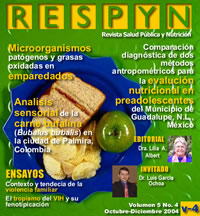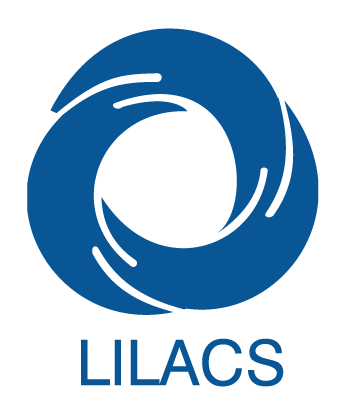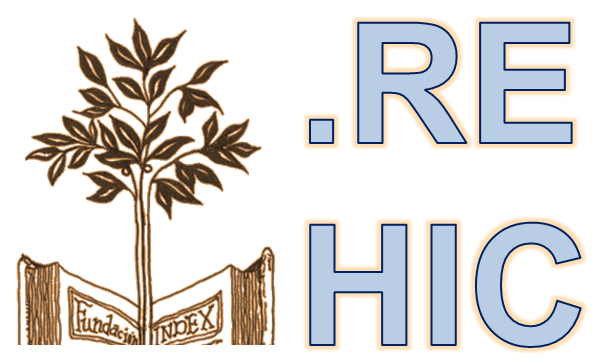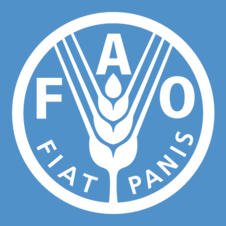EL TROPISMO DEL VIH Y SU FENOTIPIFICACIÓN.
Abstract
El objetivo de nuestra investigación en el BL-3 empieza al enfocarnos para entender las interacciones especificas entre los componentes moleculares del VIH y las proteínas humanas .
Este proceso nos definirá cuales son los factores del huésped que son requeridos para una infección productiva. Un objetivo inmediato de esos estudios son el proveer con nuevas terapias para el desarrollo de nuevos medicamentos. Usando lo que hemos conocido sobre estos trabajos moleculares intentamos estudiar las interacciones moleculares del VIH y el sistema inmune del huésped .
Palabras clave : Tropismo , HIV, CD4, CXCR4, CCR5, Compuestos Arginino Aminoglicosidos , mutaciones , antiretrovirales
Tropism, HIV, CD4, CXCR4, CCR5, Arginine aminoglicosid, Mutations, Antiretroviral
Downloads
References
Barre-Sinoussi F, JC. Chermann ,F. Rey ,MT. Nugeyre ,S. Chamaret ,J. Gruest ,C. Dauguet ,C. Axler-Blin ,F. Vezinet-Brun, C. Rouzioux, W. Rozenbaum and L. Montagnier 1983. Isolation of a Tlymphotropic retrovirus from a patient at risk for acquired immune deficiency syndrome (AIDS).
Science;220(4599):868-871
Gallo, RC, PS. Sarin, EP. Gelmann, M. Robert-Guroff, E. Richardson, VS. Kalyanaraman, D. Mann, GD. Sidhu, RE. Stahl, S. Zolla-Pazner, J. Leibowitch and M. Popovic. 1983 Isolation of
human T-cell leukemia virus in acquired immune deficiency syndrome (AIDS). Science;220(4599):865-867
Alkhatib G, CC. Broder and EA. Berger. 1996a. Cell type-specific fusion cofactors determine human immunodeficiency virus type 1 tropism for T-cell lines versus primary macrophages. J Virol.
(8):5487-5494
Alkhatib G, C. Combadiere, CC. Broder, Y. Feng, PE. Kennedy, PM. Murphy and EA. Berger. 1996b. CC CKR5: a RANTES, MIP-1alpha, MIP-1beta receptor as a fusion cofactor for
macrophage-tropic HIV-1. Science;272(5270):1955-1958.
Trkola A, T. Dragic, J. Arthos, JM. Binley, WC. Olson, GP. Allaway, C. Cheng-Mayer, J. Robinson, PJ. Maddon, and JP. Moore. 1996. CD4-dependent, antibody-sensitive interactions between HIV-1 and its co-receptor CCR-5. Nature;384(6605):184-187.
Wu L, NP. Gerard, R. Wyatt, H. Choe, C. Parolin, N. Ruffing, A. Borsetti, AA. Cardoso, E. Desjardin, W. Newman, C. Gerard and J. Sodroski.1996. CD4-induced interaction of primary HIV-1 gp120 glycoproteins with the chemokine receptor CCR-5. Nature.;384(6605):179-183.
Koot M., A.H.V. Vos, R.P.M. Keet,R.E.Y. de Goede, W. Dercksen, F.G. Terpstra, R.A. Coutinho, F. Miedema, and M. Tersmette 1992 HIV-1 biological phenotype in long-term infected individuals
evaluated with an MT-2 cocultivation assay. AIDS 6:49–54.
Asjo B., L. Morfeldt-Manson, J. Albert, G. Biberfeld, A. Karlsson, K. Lidman, and EM. Fenyo 1986 .Replicative capacity of human immunodeficiency virus from patients with varying severity of HIV
infection. Lancet. ii:660–662.
Fenyo, E.M, L. Morfeldt-Manson, F. Chiodi, A. Lind, A. von Gegerfelt, J. Albert, E. Olausson, and B. Asjo, 1988. Distinct replicative and cytopathic characteristics of human immunodeficiency virus isolates. J Virol. 62:4414–4419.
Tersmette M., R E. de Goede, B.J. Al, I.N. Winkel, R.A. Gruters, H.T. Cuypers, H.G. Huisman, and F. Miedema 1988 Differential syncytium-inducing capacity of human immunodeficiency virus
isolates: frequent detection of syncytium-inducing isolates in patients with acquired immunodeficiency syndrome (AIDS) and AIDS-related complex. J Virol, 62:2026–2032.
Alkhatib G,C.et al, Op. cit. 1996a
Alkhatib G,C.et al, Op. cit 1996b
Trkola A. et al, Op. cit
Wu L, et al, Op. cit
Furci L, G. Scarlatti and S. Burastero.1997. Antigen-driven C-C chemokine-mediated HIV-1 suppression by CD4(+) T cells from exposed uninfected individuals expressing the wild-type CCR-5
allele. J Exp Med; 186: 455-460.
Trkola A, T. Dragic, and J. Arthos. 1996. CD4-dependent, antibody-sentive interactions between HIV-1 and its co-receptor CCR-5- Nature; 384 (6605): 814-817
Balfe P, Y. Churcher and M. Penny 1998. Association between a defective CCR-5 gene and progression to disease in HIV infection. AIDS Res Hum Retroviruses; 14: 1229-1234.
Gorry PR, C. Zhang, S. Wu, K. Kunstman, E. Trachtenberg, J. Phair, S. Wolinsky and D. Gabuzda. 2002 Persistence of dual-tropic HIV-1 in an individual homozygous for the CCR5 Delta
allele. Lancet. May 25;359(9320):1832-1834.
Moriuchi H, M. Moriuchi, C. Combadiere, PM. Murphy and AS. 1996 Fauci.CD8+ T-cell-derived soluble factor(s), but not beta-chemokines RANTES, MIP-1 alpha, and MIP-1 beta, suppress HIV-1
replication in monocyte/macrophages Proc Natl Acad Sci U S A.;93(26):15341-15345.
Ahmed RK, B. Makitalo, K. Karlen, C. Nilsson, G. Biberfeld and R. Thorstensson. 2002 Spontaneous production of RANTES and antigen-specific IFN-gamma production in macaques vaccinated with SHIV-4 correlates with protection against SIVsm challenge. Clin Exp Immunol;129(1):11-18.
Trujillo JR, WK. Wang, TH. Lee and M. Essex. 1996 Identification of the envelope V3 loop as a determinant of a CD4-negative neuronal cell tropism for HIV-1. Virology.;217(2):613-617.
Doranz BJ., K. Grovit-Ferbas, MP. Sharron, SH. Mao, MB. Goetz, ES. Daar , RW. Doms and WA. O'Brien.1997 A small-molecule inhibitor directed against the chemokine receptor CXCR4 prevents its use as an HIV-1 coreceptor. J Exp Med.;186(8):1395-1400
Tamamura H, T. Murakami, M. Masuda, A. Otaka, W. Takada, T. Ibuka, H. Nakashima, M. Waki, A. Matsumoto and N. Yamamoto. 1994. Structure-activity relationships of an anti-HIV peptide,
T22. Biochem Biophys Res Commun.;205(3):1729-1735.
De Clercq E and D. Schols 2001.Inhibition of HIV infection by CXCR4 and CCR5 chemokine receptor antagonists. Antivir Chem Chemother.;12 Suppl 1:19-31
Daelemans D, D. Schols, M. Witvrouw, C. Pannecouque, S. Hatse, S. van Dooren, F. Hamy, T. Klimkait, E. de Clercq and AM.VanDamme .2000 A second target for the peptoid
Tat/transactivation response element inhibitor CGP64222: inhibition of human immunodeficiency virus replication by blocking CXC-chemokine receptor 4-mediated virus entry. Mol Pharmacol.
(1):116-124.
Armand-Ugon M, ME. Quinones-Mateu , A. Gutierez, J. Barretina, J. Blanco, D. Schols, E. De Clercq, B. Clotet, JA. Este. 2003 Reduced fitness of HIV-1 resistant to CXCR4 antagonists. Antivir Ther;8(1):1-8.
De Clercq E. 2002 New developments in anti-HIV chemotherapy Biochim Biophys Acta.;1587(2- 3):258-275.
Litovchick A, A. Lapidot, M. Eisenstein, A. Kalinkovich and G. Borkow. 2001 Neomycin Barginine conjugate, a novel HIV-1 Tat antagonist: synthesis and anti-HIV activities.
Biochemistry.;40(51):15612-15623.
Lapidot A., M. Eisenstein, A. Kalinkovich and G. Borkow, 2002 Neomycin B-arginine conjugate, a novel HIV-1 Tat antagonist: synthesis and anti-HIV activities, Antivir. Res. 53 (3): 26 Sp. Iss.
Borkow G., V. Vijayabaskar , HH. Lara, A. Kalinkovich and A. Lapidot,2003.Structure-activity relationship of neomycin, paromomycin and neamine- arginine conjugates, targeting HIV-1 gp120- CXCR4 binding step. Antiviral Res.;60(3):181-192.
Borkow G, HH. Lara and A. Lapidot . 2003. Mutations in gp41 and gp120 of HIV-1 isolates resistant to hexa-arginine neomycin B conjugate. Biochem Biophys Res Commun.;312(4):1047-
Downloads
Published
How to Cite
Issue
Section
License
The rights of the work belong to the author or authors, however, by sending it for publication in the Public Health and Nutrition Magazine of the Faculty of Public Health and Nutrition of the Autonomous University of Nuevo León, they grant the right for its first publication in between electronic, and possibly, in print to the Public Health and Nutrition Magazine. The license used is the Creative Commons attribution, which allows third parties to use what is published whenever the authorship of the work is mentioned and the first publication that is in the Public Health and Nutrition Magazine. Likewise, the author or authors will take into account that it will not be allowed to send the publication to any other journal, regardless of the format. The authors will be able to make other independent and additional contractual agreements for the non-exclusive distribution of the version of the article published in the Public Health and Nutrition Magazine (e.g., institutional repository or publication in a book) provided they clearly state that The work was published for the first time in the Public Health Magazine, Magazine of the Faculty of Public Health and Nutrition of the Autonomous University of Nuevo León.










